Spirits sales are spilling over as shoppers choose to splash out and impress their guests with fancy bottle designs and new flavours
Despite all the hype about people cutting down their alcohol intake, the spirits category is still in growth (5%, IRI Top Categories Special Report 2017). How, you ask? Well, we have premiumisation across the category to thank, in part.
Despite 41% of drinkers saying they’re actively trying to consume less (up from 33% a year ago, Harris Interactive research conducted for The Grocer 2018), it’s also the younger generation of drinkers who are more likely to fork out for the top-end tipples. In fact, some 35% of 25- to 34-year-olds believe spirits are worth paying more for, versus 23% of over-55s, for example.
It’s because of this trend that premium spirits are driving all the spirits growth in the GB Off Trade (Nielsen Scantrack to 4 November 2017) and contributing to the fact that the average spirits shop is bringing in a higher basket spend than in the past (an average trip spend of £20.72, up from £17.24 in 2016, HIM 2017).
And if that wasn’t enough to convince retailers that it’s well worth premiumising their spirits, it turns out that doing this will also make their entire store look good to the shopper; half of shoppers say a quality premium spirits range would influence their opinion on the quality of the c-store as a whole (HIM CTP 2016).
Premiumisation
Harry Goraya, owner of Rosherville Post Office in Gravesend, Kent, has witnessed the premiumisation trend among his shoppers and throughout the spirits category. He has a cabinet devoted to specialist premium spirits which can cost up to £300. He says these sell very well considering their price tags – he sells about two bottles every week. He ensures to add extra value by encouraging his high-end shoppers to make special requests.
“I always encourage these shoppers to send me photos of other products they’ve seen elsewhere that they’d like me to sell. They can send me the picture on Facebook or Instagram, or they can simply put a note in our suggestions box. This is a great way to engage with customers and make them feel they are getting more of a personalised service. Younger shoppers find it very quick and easy to take a snap and send it over, much easier than writing out a request.”
Paul Gardner, of Budgens of Islington, North London, also displays his spirits in an eye-catching glass cabinet near the tills.
“We have become a destination for craft beer and are now becoming a destination for a huge selection of spirits on what I describe as semi-free flow, with people willing to trade up,” says Paul.
Havana club design gets into cuban spirit
Havana Club, the 100% authentic Cuban rum, has unveiled a new label for its golden Havana Club Añejo Especial rum, designed to better reflect the vibrancy of Cuba and communicate the quality and authentic production process of the liquid to modern rum drinkers.
The new look is presented on premium paper and reflects Cuban street culture with striking blue and red edges, while the inclusion of tree rings, two oak barrels and a sand timer denote the authentic double-aged maturation method that gives Havana Club Especial its flavour.
The bottle’s shape and the ‘El ron de Cuba’ tagline remain in place.
Nick Blacknell, marketing director at Havana Club International, says: “At Havana Club, we are proud of our Cuban culture, authentic rum production methods and revolutionary spirit – all of which are now reflected in the new Havana Club Especial label.”
As part of its commitment to revolutionise the global rum category and to transform the perceptions about the classic rum and cola serve, Havana Club is promoting a modern take on the drink through its Especial Cuba Libre.
A Cuba Libre is crafted with Havana Club Especial, cola, ice and a wedge of fresh lime, offering a “more sophisticated taste”.
The Especial Cuba Libre is being promoted in both the on and off trade, and will also be supported across Europe at festivals such as the Especial Sessions at Tomorrowland (Belgium) and Musik I lejet (Denmark), through dedicated branded bars and POS such as glasses, jugs and giveaways.
Blacknell adds: “The classic Cuba Libre serve will inspire a whole new generation with the refreshing taste of rum and cola. We have seen what has happened in the gin category over the past five years and we expect the rum category to experience the same resurgence.”
Gin growth
The other big reason spirits are in growth is the gargantuan rise of gin. According to IRI’s Top Categories Special Report 2017, gin has seen double-digit growth in the UK (up 24% year on year).
Olly Abotorabi, senior regional insights manager at IRI, says gin has been driven by a growing number of small and niche batch distillers, celebrity culture and enhanced exposure in stores via displays during key seasonal events.
The Wine and Spirit Trade Association (WSTA) Market Report 2018 shows that more than 51 million bottles of gin were sold in the UK last year – up 27% in volume. Most gin was sold in supermarkets and shops, where value sales grew by 38% and volume sales by 28%.
CGA commercial director Graeme Loudon says the UK has gained 212 new gin brands in the past three years and only 8% of these were “standard”, as the rest were premium. As such, distribution of premium gins has increased by 320% in the past three years.
“Gin sales are up 32% in convenience outlets over the past year. Experimentation is capturing the imagination of shoppers. Gin in the convenience channel is worth £58.5m, £45.1m in non-premium and £13.3m in premium,” he adds.
Loudon says that shoppers have a preference towards lighter, more refreshing flavours. The top-rated flavours are lemon and citrus, followed by elderflower, pomegranate, cherry, grapefruit, then mint.
Mandi Duncan, co-owner of two Day Today stores in South Ayrshire, has an impressive 120-strong range of gins which she has slowly increased to meet demand from shoppers. She says there’s always a new flavour or new distiller to discover and likes to try to be the first to stock any gin NPD as she knows this is the way to remain a destination store for gin explorers.
She does concede, however, that as impressive as her range may be, people do generally just buy gin based on how pretty the bottle is.
“I’ll be honest, I think people buy different gins for their attractive bottles. People might like to have them as ornaments or perhaps stick a candle in them when they’re finished.”
Josie Chamberlain, owner of Costcutter Codicote in Hertfordshire, agrees that it’s the bottle or the colour of the liquid that makes all the difference. She says that Gordon’s Pink Gin, Opihr Oriental spiced gin and Bath Tub gin have all gone well in her store.
“I think the reason these are all so popular is due to their quality and their distinctive tastes. Also the bottles are very attractive and they look great on the shelf, so this is a big pull factor.”
Loudon says pink gins are a great eye-catching addition to any spirits range as these generally are a popular USP and 40% of gin drinkers drink pink gins.
Baz Jethwa, who owns three Spar stores around Bolton, has noticed this trend and finds that both the Beefeater and the Gordon’s Pink gins are incredibly popular.
Mandi likes to create gift-wrapped sets of miniatures and mixers to provide a solution for shoppers on a gifting mission. “There’s one called Colla-gin which has collagen in it. We pair this with tonic and call it a ‘skin and tonic’,” she says. “Lots of people have bought that one.
“I don’t think its popularity will last for long, but people like that it’s different and like the joke, so it makes a fun and quirky gift.”
Mandi is right to be ready for gins to go in and out of fashion very quickly. The more people are drinking different gins, the more they are learning about what’s on the market and becoming more discerning.
Hi-Spirits managing director Dan Bolton says: “There’s no sign of the gin boom slowing down any time soon, but consumer knowledge and expectations have grown as fast as sales. The key thing for retailers to appreciate is that gin is no longer a ‘one-size-fits-all’ spirit category.
“Stocking a range of brands covering mainstream, premium, local and craft gins will interest customers, and with each gin having its own flavour profile, suggested serves for each brand will drive sales.”
Merchandising musts from diageo
Diageo points out that 90% of UK households buy alcohol, but only one in three buy it through c-stores (Nielsen Homescan 26 March 2016). It says that by encouraging new adult shoppers to consider convenience and existing shoppers to spend more per shop, retailers can tap into a huge incremental sales opportunity.
Diageo provides plenty of merchandising advice on its My Store Matters website (www.mystorematters.co.uk). The advice includes:
Sub-categories should be blocked together (such as vodka, gin and rum) as it helps shoppers see what a store has to offer more easily.
The top three missions are ‘Something for Tonight’, ‘Top Up’ and ‘Gifting’, so make sure your offer has something for each mission.
Make alcohol visible and accessible by creating off-fixture displays which can help grow sales by more than 18% (Nielsen Scantrack data to 18 June 2016).
The average time taken to make a spirits purchase decision in a c-store is just 13 seconds, so make it as easy as possible to shop the fixture (Kantar research, 2016). Brand leaders such as Smirnoff and Gordon’s are recognisable so place them in the centre of the sub-category.
Price is the most important information shoppers want to see, so having clear pricing can significantly increase the likelihood of shoppers making a purchase (HIM Spirits Category Focus 2016).
The top 20 brands account for 71% of total spirits sales in impulse (Nielsen Scantrack 15 July 2017) so ensure you have the ‘must-stock’ SKUs.
Sales tonic
There’s not much point in selling premium gins if you’re not providing a premium tonic to mix it with. Some 19% of spirits shoppers will also buy soft drinks with their booze (HIM 2017) and Loudon says 60% of consumers say that the type of mixer they drink is just as important at the spirit, meaning a premium mixer is an essential addition to a premium spirit.
Baz has noticed how important it is to display high-quality mixers alongside his gin offering.
”It’s all about linking it with other products such as raspberries and Fever Tree tonic, and making a bit of theatre to catch people’s attention,” he says.
Donna Morgan, of Brownlies of Biggar in South Lanarkshire, has a vast array of Fever Tree tonics to accompany her gin range, as well as other garnishes such as star anise, juniper berries and Parma Violets. She believes these are a fantastic way to boost basket spend further, as well as become a destination store for gin.
Mandi also finds that the miniatures are a good way to tempt shoppers who like to try new SKUs without breaking the bank.
“I sell loads of miniatures,” she says. “These look really nice and they encourage people to try something new. I know that I personally want to try every flavour we sell! But I don’t want to open a big bottle, so I would buy one of these to try the drink before buying the big bottle.”
She adds that it’s not just the miniatures that sell well either, it’s the 20cl bottles too.
HIM (CTP 2016) says that it is a market-wide trend that shoppers buy smaller pack sizes as gifts to try before buying a full bottle. It’s thanks to their gifting and sampling attraction that fractional spirits are growing and contribute 34% of total spirits sales (Nielsen Scantrack to 2 December 2017).
Sailor Jerry Spiced Rum gets an update
Sailor Jerry Spiced Rum, created to honour the Father of American old-school tattooing, Norman ‘Sailor Jerry’ Collins, has been given a new bottle design.
Sailor Jerry is a smooth Caribbean Rum with hints of caramel and vanilla, blended with natural spices and flavours.
Norman ‘Sailor Jerry’ Collins was a Navy vet who built his reputation inking soldiers and sailors in WW2-era Honolulu. The revamped bottle recalls classic elements of his business card and features the Hula girl, a signature piece of Collins’ tattoo artwork. The back of the bottle tells Collins’ story.
Additional updates to the new bottle design include a larger Sailor Jerry script logo on a strong, black circle background, making it more visible on shelf.
The brand has also started a ‘Jerry Loves Ginger’ serve strategy, featuring a host of cocktail recipe ideas on its website.
All made with Sailor Jerry Spiced Rum, the recipes include: Perfect Ginger, made with fresh lime, ginger beer and a dash of ginger and Angostura bitters; Ginger Pina Colada made with cream of coconut, pineapple juice and ginger syrup; and a Ginger Apple Cooler, which is made with ginger syrup, apple juice, fresh lemon juice and soda water.
Rum
Shoppers aren’t only looking to experiment with gins. The WSTA report 2018 shows that new flavours are on the rise, with flavoured vodkas and flavour/spiced rums all in growth in both the on and off trade, and CGA has consistently suggested that golden rum is the next big thing in the on trade.
According to manufacturers, c-store retailers should be noticing a resurgence in spiced and flavoured rums right now.
Bolton at Hi-Spirits says: “Rum has been forecast to be the ‘next big thing’ in the spirits sector for some time, and we’re now really starting to see the prediction come true.
“Spiced rum in particular has a strong appeal to consumers because it’s on trend in terms of its flavour profile, making it straightforward to create interesting drinks simply by adding a mixer or fresh juice. RedLeg has seen listings grow in the off-trade, and popular on-trade serves such as the Ginger Mojito are easy to replicate at home.”
Halewood Wine and Spirits adds that it’s the younger audience, particularly millennials, who are driving the growth and reappraisal of the rum category. And pack design impact and visibility are currently the leading factor in the trial of new liquids (CGA Consumer Panel September 2017). In line with its research, Halewood-owned Dead Man’s Fingers recently added two new flavours to its Dead Man’s Fingers spiced rum portfolio: coffee rum and coconut rum (37.5% ABV, 70cl, rrp £22).
James Stocker, marketing director at Halewood Wines & Spirits, explains how these distinctive flavours and on-trend bottle designs should appeal to this younger generation of drinkers: “We can see from market data and industry trends that there’s a new generation of rum drinkers that want to be associated with brands that are dynamic, fresh, packed with attitude and moving with the times. As such, we’ve developed intriguing flavours that are inspiring and versatile to both consumers and the trade, and designed bold new packaging that we’re confident will draw our target audience into this evolving rum category.”
However, Sid Sidhu, who is generally ahead of the curve when it comes to spirits, says he’s heard all about this resurgence in rum from a lot of manufacturers but is yet to see it transfer to his shoppers. “I keep hearing that this is going to be the year for rum, I think I heard that last year as well, but I’m still seeing the surge in gin continuing and I can’t see this changing soon.”
Sid is still gaining fantastic sales from his entire spirits category, though, thanks to his clever merchandising with plenty of cocktail ideas imparted through eye-catching POS material.
Sid keeps his cocktail ideas interesting and on-trend by taking the lead from local cocktail lounges.
“The flavour and cocktail trends always start in the cocktail bars and lounges. There are quite a few in our area and so we get a lot of the same customers and I often speak to shoppers about what they’re drinking in the bars now and if they’ve tried anything new.
“If there’s a specific cocktail that’s really popular then it’s a good idea to sell the ingredients for it and provide POS to inform shoppers how to make it.”
His work is very much in line with Hi-Spirits’ merchandising advice. Bolton says: “The challenge for retailers is to replicate the fun elements of cocktail culture. Alongside a core spirits range of gin, vodka, bourbon and rum – white, dark and spiced – recipe cards, flavoured liqueurs, vermouths, ice, citrus fruit, mint, juices and purees are all part of the cocktail sales mix and will boost take-up when well displayed and cross-merchandised.”
Bolton adds that watching the trends in the on-trade can also help inform upcoming speciality liquor fashions. He says brands such as Tuaca, Fernet Branca and Caffé Borghetti tend to have a loyal following, but it’s important to monitor trends. For example, the popularity of the Espresso Martini has put coffee cocktails, and therefore coffee liqueurs, front of mind with consumers.
Sid points out that vodka is another spirit that has enjoyed a surge thanks to its versatility in terms flavours available and the ability to use it within cocktails.
Tapping into this, Pernod Ricard recently linked up with C-Store to host a remerchandising programme across c-stores (C-Store 23 March), showing how small merchandising changes can have a huge impact on sales within the spirits category. The programme concentrated on Absolut vodka and illustrated how to make the most of at-home cocktail-making culture.
Within the c-stores involved in the project, the merchandising changes made by Pernod Ricard led to a 46% uplift in spirits sales.
Pernod Ricard marketing manager Veronica Wall says: “Cocktails at home is a huge opportunity for c-store retailers. Younger shoppers are staying in rather than going out and providing ideas for them is important. There’s a great interest in premium spirits yet they are under-indexing in the convenience channel. Reasons for this are: the fact spirits are located behind the counter; theft; and habitual behaviour of shoppers.
“In the shop project we brought spirits out from behind the counter and provided simple cocktail ideas on POS. We created a clip-strip which sits in the mixers aisle and reminds shoppers they might like the vodka to mix with their drink. The POS also provides other ingredient ideas to encourage further sales. We also created an FSDU with dummy boxes and cocktail ideas on the backs of the boxes.
“Over a four-week period there was a 46% uplift in sales across the four stores, a 6.2% increase in vodka category sales and a 24% increase in Absolut sales.”
Whisky
Further representing consumers’ willingness to experiment, imported whisky is worth nearly £800m to the UK spirit market, about 7.5% market share (WSTA Market report).
Japanese whiskies have certainly made waves in the UK, with volumes having more than doubled in the past five years or so. According to the IWSR, global sales of US whiskey increased by about 6% in the UK in the past year alone.
So while gin is gulping ahead of other spirits, there’s plenty of opportunity to boost category sales further within flavoured vodkas, spiced rums and imported whiskies.
And anyone struggling to sell these trendy tipples ought to offer some inspiration by displaying bottles with cocktail recipe cards, accompanying cocktail ingredients and some eye-catching cross-merchandising reminders.
















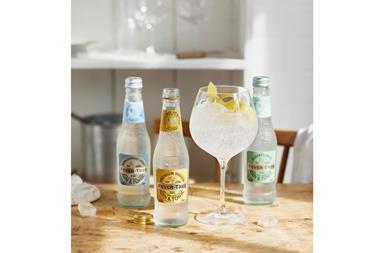
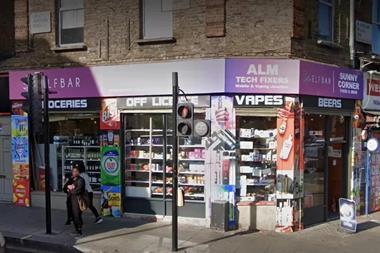
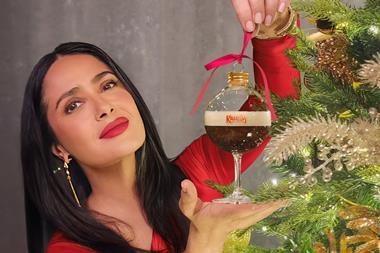
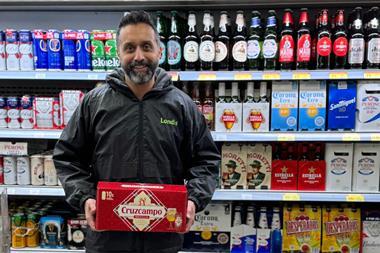


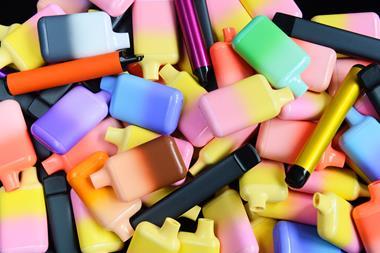





No comments yet